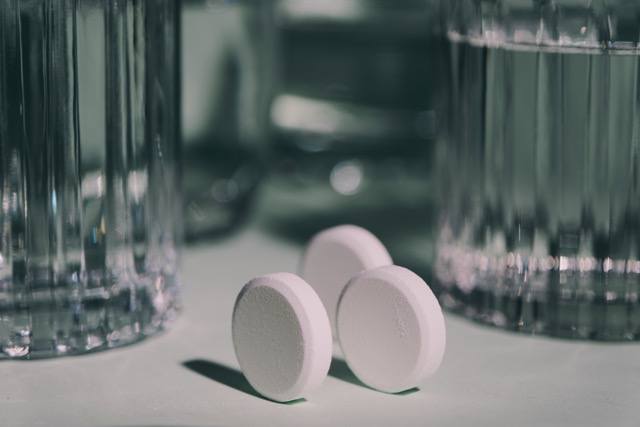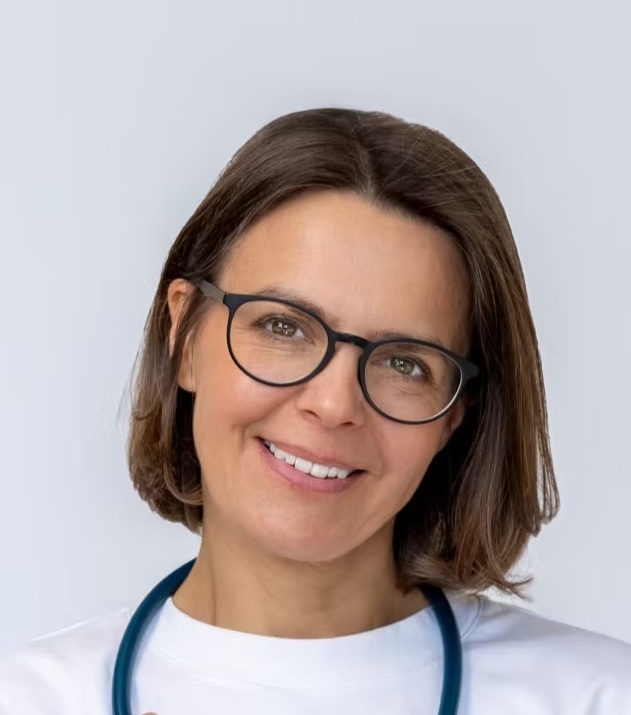Internal Aging: Organs and Their Own Chronology
Why organs age differently and how this affects our lifespan

Aging is an unavoidable part of the human life cycle that is controlled by a variety of complex biological processes. While aging is often regarded as a uniform and continuous process, recent scientific findings show that various organs and tissues in the body have their own time clock. This phenomenon, known as “organ-dependent aging,” raises fascinating questions about how and why the body can age. In this article, we'll look at why organs have their own time and how this is changing our understanding of aging.
The idea that different organs age at different rates may seem surprising at first glance. After all, all body cells are subject to similar degradation processes over time. However, recent research has shown that aging is not only dependent on genetic factors and environmental influences, but is also strongly influenced by the functionality of each individual organ.
Different cell types
A key element of this phenomenon is the fact that different organs contain different types of cells, which differ in their activity and lifespan. For example, liver cells regenerate faster than those of heart tissue, which results in less accumulation of damage and therefore a longer lifespan of these cells. These differences in cell regeneration help the liver age more slowly than the heart.
In addition, the environment in which the organs work also plays an important role in organ-specific aging. An organ such as the skin is constantly exposed to external influences such as UV radiation and environmental pollution, which can lead to an accelerated aging process. In contrast, the brain is surrounded by a protective layer, the blood-brain barrier, which protects it from many harmful substances. This partly explains why the brain tends to age more slowly than the skin.
Another important factor is blood flow. Organs that have good blood flow are continuously supplied with oxygen and nutrients, which maintains their functionality and can slow down the aging process. For example, there is good blood flow to the heart, which helps damage to be repaired better. This then means that the heart can work efficiently for longer compared to organs with less good blood flow.
Some organs can slow down or even reverse their aging processes.
An exciting aspect of organ-specific aging is the fact that some organs can slow down or even reverse their aging processes. The most prominent example is the liver, which has remarkable regenerative abilities. Studies have shown that the liver is able to repair damaged tissue and even restore lost functions. This raises the question of whether it is possible to promote these regenerative abilities in other organs as well and thus slow down the overall aging process.
Promising research approaches
The discovery of organ-dependent aging has profound effects on our approach to healthcare and anti-aging strategies. Instead of viewing aging as a uniform process, tailored approaches could be developed that focus on specific organs. This could mean that future therapies aim to support the regeneration and functionality of specific organs to slow down the entire aging process.
There are already promising areas of research that focus on organ-specific aging. Stem cell research, for example, has the potential to open up new ways to regenerate tissues and organs. The development of drugs that specifically influence the activity and lifespan of certain cells could also be a revolutionary approach to slow down aging.
Overall, the finding shows that different organs have their own time and how complex and multi-layered the aging process actually is. This understanding opens up new opportunities for medical research and could ultimately lead to innovative approaches to improve the quality of life in old age. While aging remains inevitable, we may be able to influence the way we age — not just as a whole, but also at the level of the individual organs that make up our bodies.
References
- Kirkwood, T.B.L. (2005). Understanding the odd science of aging. Cell, 120(4), 437—447. https://doi.org/10.1016/j.cell.2005.01.027
- Isaev, N.K., Stelmashook, E.V. & Gengrikh, E.E. (2019). Neurogenesis and brain aging. Reviews in The Neurosciences, 30(6), 573—580. https://doi.org/10.1515/revneuro-2018-0084
- Lopez-Otín, C., Blasco, M.A., Partridge, L., Serrano, M., & Krömer, G. (2013). The hallmarks of aging. Cell, 153 (6), 1194-1217.
- Finkel, T., & Holbrook, N. J. (2000). Oxidants, oxidative stress and the biology of aging. Nature, 408 (6809), 239-247.
- Kirkwood, T.B., & Austad, S.N. (2000). Why do we age? Nature, 408 (6809), 233-238.
- Campisi, J. (2013). Aging, Cellular Senescence, and Cancer. Annual Review of Physiology, 75, 685-705.
- López-Otín, C., Galluzzi, L., Freije, J.M.P., Madeo, F., & Krömer, G. (2016). Metabolic control of longevity. Cell, 166 (4), 802-821
Publiziert
1.7.2024
Kategorie
Health

Experte
Aging is an unavoidable part of the human life cycle that is controlled by a variety of complex biological processes. While aging is often regarded as a uniform and continuous process, recent scientific findings show that various organs and tissues in the body have their own time clock. This phenomenon, known as “organ-dependent aging,” raises fascinating questions about how and why the body can age. In this article, we'll look at why organs have their own time and how this is changing our understanding of aging.
The idea that different organs age at different rates may seem surprising at first glance. After all, all body cells are subject to similar degradation processes over time. However, recent research has shown that aging is not only dependent on genetic factors and environmental influences, but is also strongly influenced by the functionality of each individual organ.
Different cell types
A key element of this phenomenon is the fact that different organs contain different types of cells, which differ in their activity and lifespan. For example, liver cells regenerate faster than those of heart tissue, which results in less accumulation of damage and therefore a longer lifespan of these cells. These differences in cell regeneration help the liver age more slowly than the heart.
In addition, the environment in which the organs work also plays an important role in organ-specific aging. An organ such as the skin is constantly exposed to external influences such as UV radiation and environmental pollution, which can lead to an accelerated aging process. In contrast, the brain is surrounded by a protective layer, the blood-brain barrier, which protects it from many harmful substances. This partly explains why the brain tends to age more slowly than the skin.
Another important factor is blood flow. Organs that have good blood flow are continuously supplied with oxygen and nutrients, which maintains their functionality and can slow down the aging process. For example, there is good blood flow to the heart, which helps damage to be repaired better. This then means that the heart can work efficiently for longer compared to organs with less good blood flow.
Some organs can slow down or even reverse their aging processes.
An exciting aspect of organ-specific aging is the fact that some organs can slow down or even reverse their aging processes. The most prominent example is the liver, which has remarkable regenerative abilities. Studies have shown that the liver is able to repair damaged tissue and even restore lost functions. This raises the question of whether it is possible to promote these regenerative abilities in other organs as well and thus slow down the overall aging process.
Promising research approaches
The discovery of organ-dependent aging has profound effects on our approach to healthcare and anti-aging strategies. Instead of viewing aging as a uniform process, tailored approaches could be developed that focus on specific organs. This could mean that future therapies aim to support the regeneration and functionality of specific organs to slow down the entire aging process.
There are already promising areas of research that focus on organ-specific aging. Stem cell research, for example, has the potential to open up new ways to regenerate tissues and organs. The development of drugs that specifically influence the activity and lifespan of certain cells could also be a revolutionary approach to slow down aging.
Overall, the finding shows that different organs have their own time and how complex and multi-layered the aging process actually is. This understanding opens up new opportunities for medical research and could ultimately lead to innovative approaches to improve the quality of life in old age. While aging remains inevitable, we may be able to influence the way we age — not just as a whole, but also at the level of the individual organs that make up our bodies.
Referenzen
- Kirkwood, T.B.L. (2005). Understanding the odd science of aging. Cell, 120(4), 437—447. https://doi.org/10.1016/j.cell.2005.01.027
- Isaev, N.K., Stelmashook, E.V. & Gengrikh, E.E. (2019). Neurogenesis and brain aging. Reviews in The Neurosciences, 30(6), 573—580. https://doi.org/10.1515/revneuro-2018-0084
- Lopez-Otín, C., Blasco, M.A., Partridge, L., Serrano, M., & Krömer, G. (2013). The hallmarks of aging. Cell, 153 (6), 1194-1217.
- Finkel, T., & Holbrook, N. J. (2000). Oxidants, oxidative stress and the biology of aging. Nature, 408 (6809), 239-247.
- Kirkwood, T.B., & Austad, S.N. (2000). Why do we age? Nature, 408 (6809), 233-238.
- Campisi, J. (2013). Aging, Cellular Senescence, and Cancer. Annual Review of Physiology, 75, 685-705.
- López-Otín, C., Galluzzi, L., Freije, J.M.P., Madeo, F., & Krömer, G. (2016). Metabolic control of longevity. Cell, 166 (4), 802-821
Publiziert
1.7.2024
Kategorie
Health

.svg)














